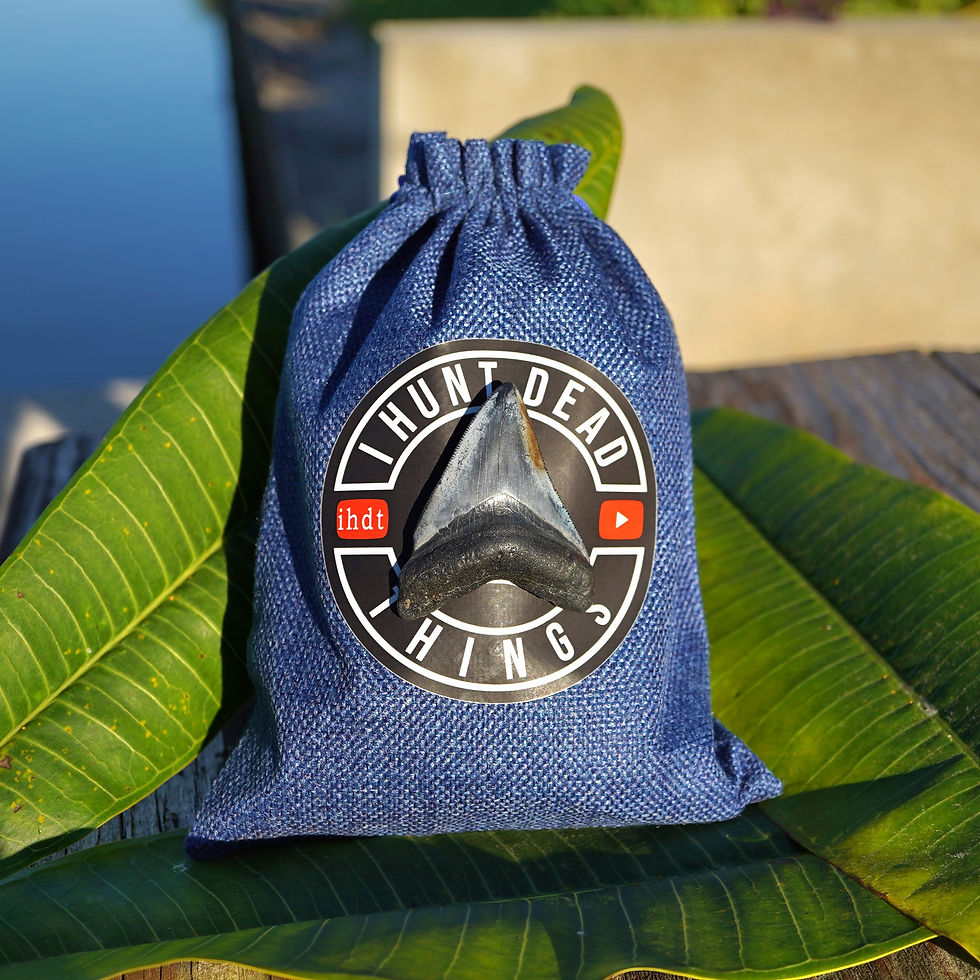Why is Venice Florida called the Sharks Tooth Capital of the World?
This is one of the most common questions we see asked especially being a YouTube channel based in this area. Let's dive into this question to get some perspective on what makes Venice FL the Sharks Tooth Capital.

Why Venice gets the Title?
Well one obvious reason, is the high quantity of shark's teeth that can be found along the beaches like Casperson, Manasota, and Venice Beach. Make no mistake though, the title is pushed as a form of marketing for the area. People travel from all over to come and comb the beaches for teeth and their hopeful crack at stumbling across the iconic megalodon tooth. Other beaches and even land sites carry this allure as well in states all across the country: Georgia, Maryland, North & South Carolina, Hawaii, Washington, & California. Heck, some of the oldest teeth are found towards the center of our country. I grew up finding shark's teeth in Kansas of all places, from the Cretaceous period, making these teeth from about 65-145 million years old! But, for Quantity & for Quality, Venice is one of the greatest areas for sharks tooth obsessed individuals like us. The one area Venice doesn't come in on top is size. That award goes to the states just north of us, primarily North & South Carolina.
If you are looking to beach comb for teeth, Venice has some great resources available. Pick up sifters, and endless shark tooth related products at Shark Frenzy & Earth Treasures or for do it yourselfers you can try this unique Dust Pan Sifter. If traveling to Venice isn't in the cards you can visit this page for locally found Sharks Teeth & Apparel as well.
Why the huge Quantity?
Sharks lose their teeth practically all the time. Just as quickly as they lose them another that has been developing replaces it. You may have heard that sharks lose thousands of teeth in a life-time, well some estimates are near 30,000 for a shark with a longer life-span. These numbers really add up when you consider how many sharks there can be in the water at any given time, and multiply it by the millions of years that sharks swam quiet literally across Florida. Another part of the speculation was that Florida itself was a sort of "shark nursery" where sharks would have their "pups" and where they would continue to feed before heading up to the aforementioned areas of North and South Carolina. The specific location that holds consistently huge teeth is "Meg Ledge" off the Wrightsville, NC. This theory seems to have "teeth" as you compare the two areas and we consistently find smaller and sometimes incredibly small "button" megs (and affectionate term for baby Megalodon teeth. Still, sharks swam all over the oceans, but why aren't all coasts just as good?
What makes this Coast Unique?
There is a huge fossil layer beneath Venice and a good portion of Florida. The Peach River Formation which is part of the Hawthorn Group spans Hillsborough, Polk, Manatee, Hardee, Desoto, and Sarasota counties. You may have likely heard of Bone Valley as well, well this is the upper section of the Peace River Formation including the first 4 counties listed. This layer is deep under the ground, but in many areas due to construction or erosion, the layer has been exposed. Rivers naturally expose this layer and constantly uncover more of the layer as currents push through. The beaches of Venice collect their teeth from the fossil layer exposure just off of the beach. Usually a quarter mile to a mile out, the fossil layer is exposed, but it is very spotty, with charters able to take you to these areas from their endless work with trial and error. Typical ocean movement brings new teeth to the beaches daily, while storms can really uncover new areas and push stray teeth up at a much more aggressive rate.
What about Quality?
Most beach-goers are very happy picking up teeth along the beach that look polished, usually of an orange or black color. Think about the journey a single shark's tooth makes to get to the beach. It is constantly moving, and when it moves forward 10 inches, it may very well move back 9. The amount of tumbling it takes to travel that quarter mile or 1 mile trip results in a very polished tooth that is usually no longer sharp. Cherish those sharp ones you do find off the beach! Many collectors begin spending more and more time and take alternative methods to find the "higher quality" teeth that this exposure has to offer. This involves going to the sharks teeth instead of waiting for them to come to you. Not only have they not been tumbled or broken from the rigger of the ocean as often, but you can catch them with their more vibrant colors before the ocean turns them black and dull. We will create another page on why shark's teeth have particular colors soon!



















